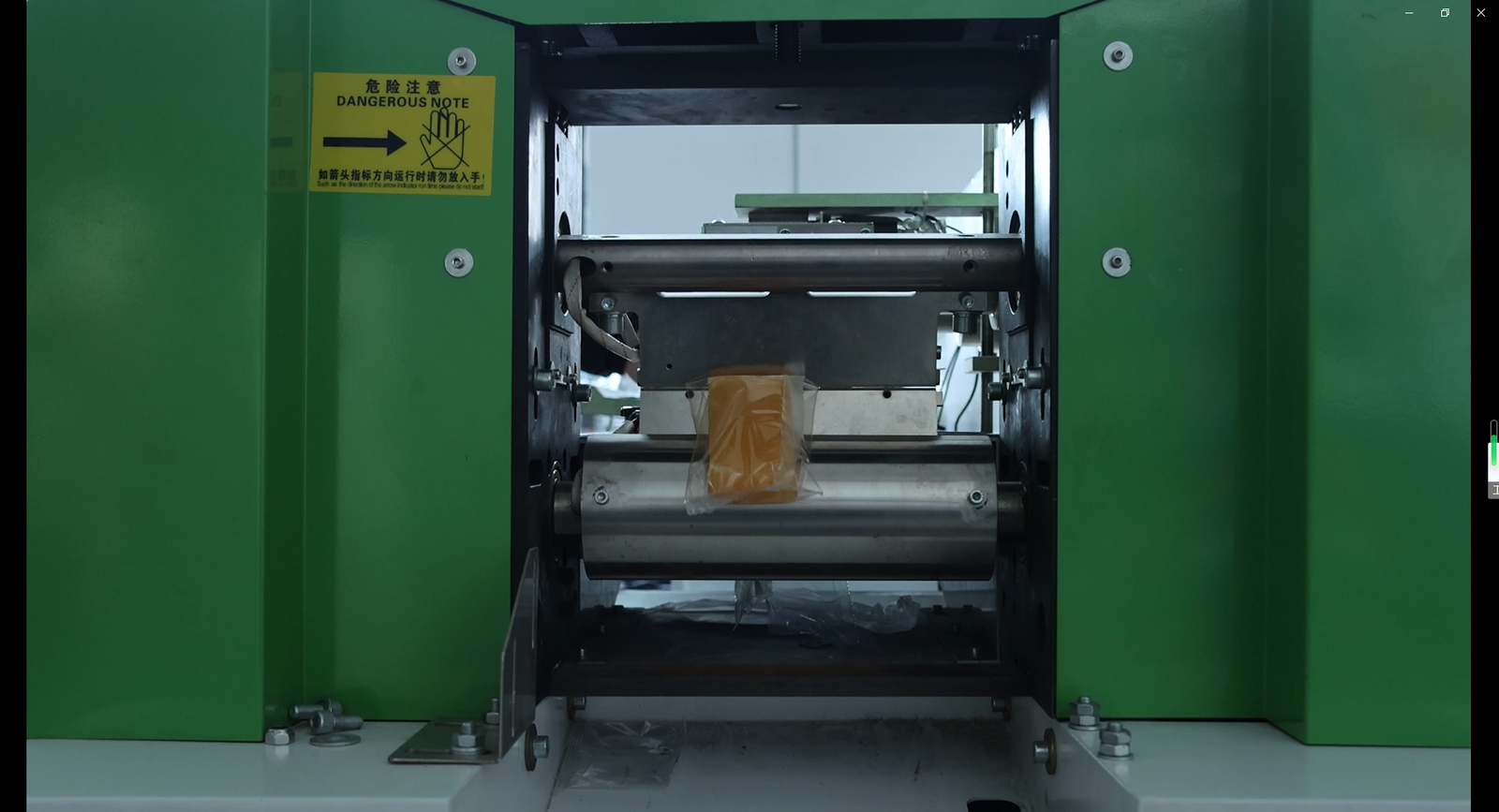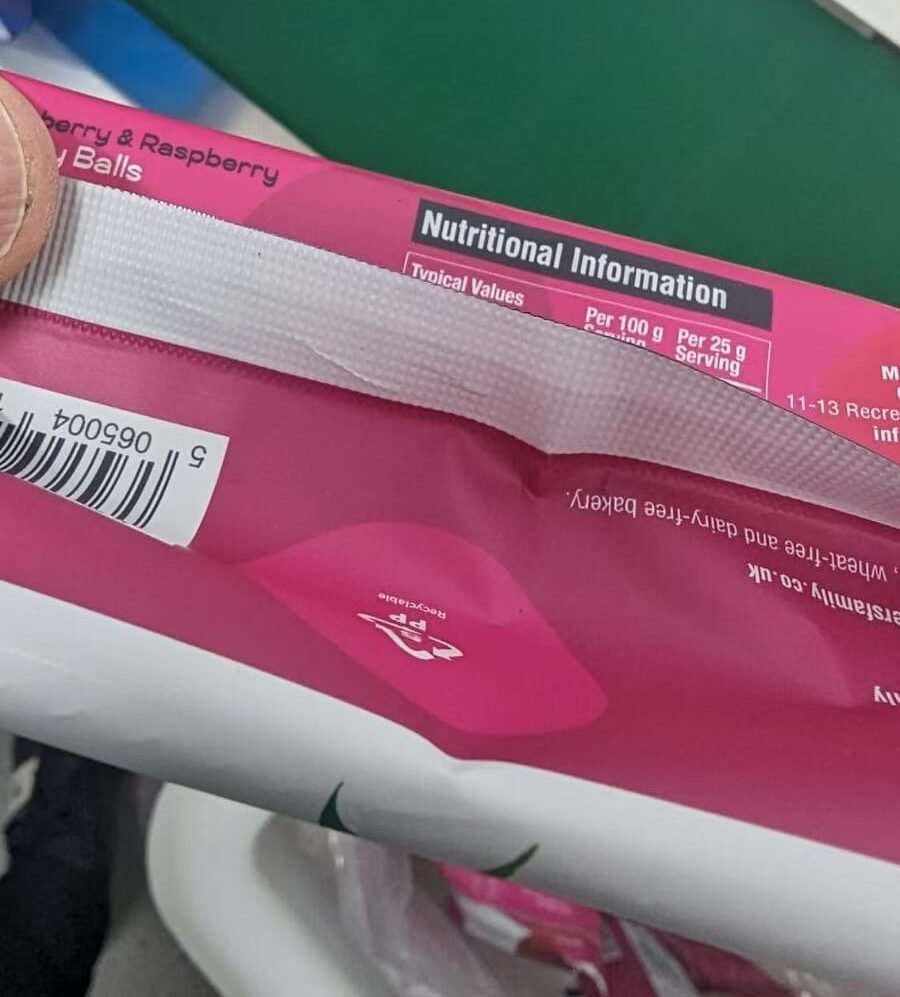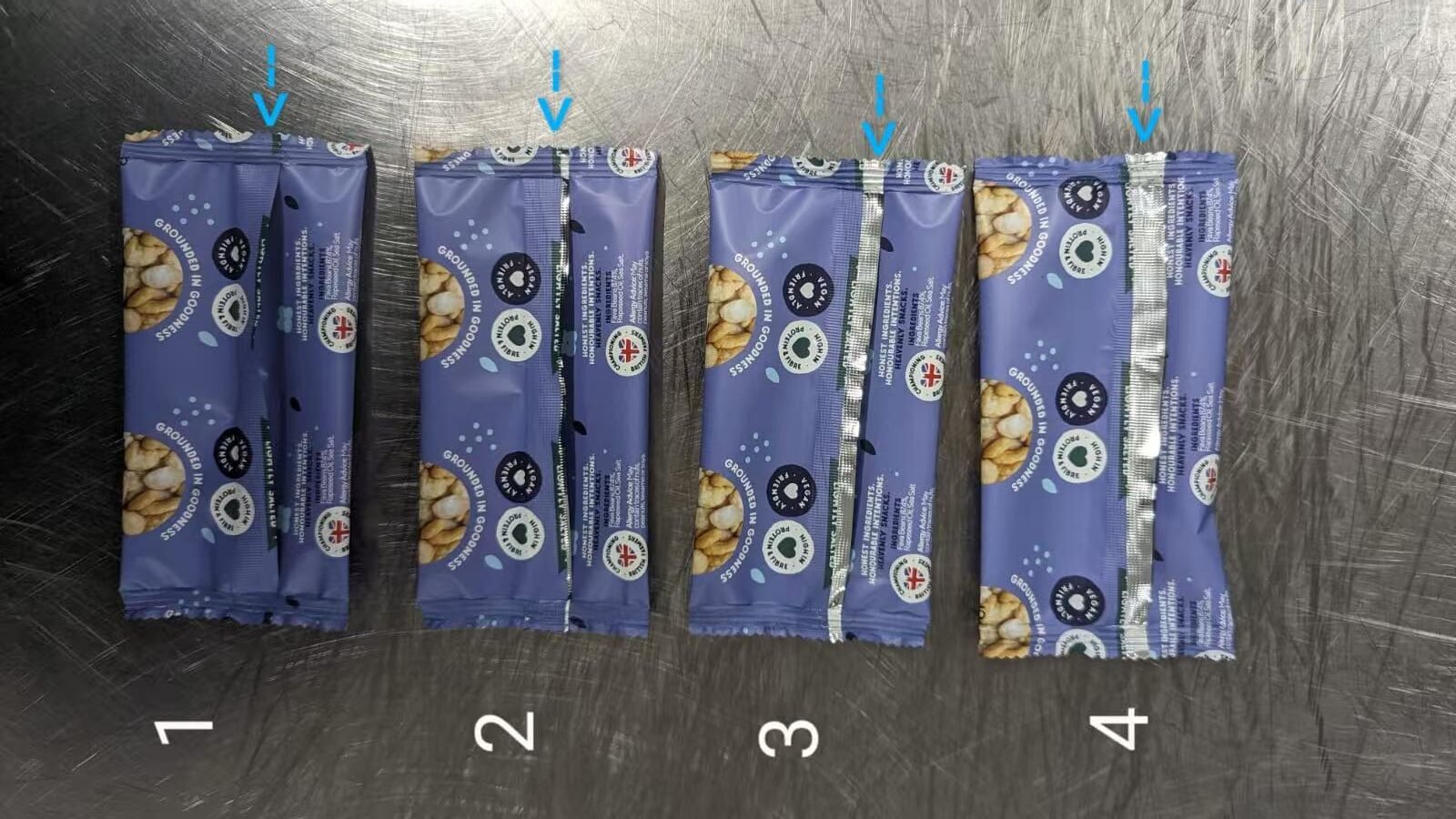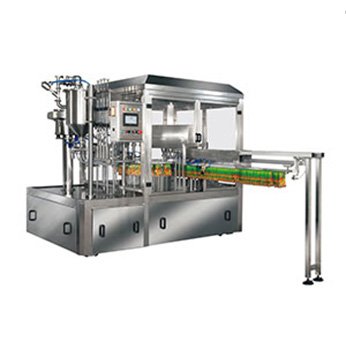Troubleshooting Common Issues with Horizontal Flow Wrapping Machines
Do you often feel frustrated dealing with daily problems related to your flow wrap machine? Have you been concerned about poor film sealing, suspecting it’s the machine’s fault? Or maybe you’ve faced situations where the film falls off during packaging and couldn’t figure out why?
Today, we’ve summarized some common issues and quick solutions for horizontal flow wrapping machines to help you address these problems efficiently.
1. Photoelectric Eye and Color Mark Sensitivity Adjustment
If the color mark sensitivity of your machine is poor, you can try adjusting it on the control screen. Set the mark position to the middle of two color marks, using millimeter units for precise adjustments.
2. When the Cutter Hits the Product
If the sealing area of your packaged product is being cut into by the cutter, you can adjust the “Product Position” on the control panel. Move the product position forward or backward based on your actual needs. This will ensure the cutter doesn’t damage the product during sealing, maintaining product integrity.

3. Wrapping Film Not Being Cut Properly
It could be a compatibility issue if your machine struggles to cut the wrapping film, especially after switching to a different film material.
Typically, manufacturers specify the film material before production. Common standard materials like PE and laminated films can be cut easily.
For specialty films like PP, regular flow wrap machines may not handle them. This material often requires testing and customization to ensure compatibility.
To avoid issues, communicate your specific film requirements clearly with the machine manufacturer when placing your order.
4. Wrinkling on the Wrapping Material
If the finished product has wrinkles or horizontal pulling on the back seat, the problem likely lies with the film-pulling rollers. The speed of these rollers directly impacts the packaging quality.
Solution: Adjust the speed of the film-pulling rollers. If they are too slow, wrinkles will appear. Proper speed adjustment will resolve this issue.

5. Seal Insecurity Due to Improper Temperature
If the machine’s temperature is too high, the film at the seal will melt.
If the temperature is too low, the film won’t reach the necessary sealing point, leaving the seal open.
Solution:
Refer to resources or documentation to determine the correct sealing temperature for different types of film. Adjust the sealing temperature on the control panel accordingly.You need to do several tests to find the right temperature, at which the bag will not deform or leak. You can use your hands to rub the bag or use a leak testing machine to determine the quality of the bag.
6. Wrapping Material Slippage
If the wrapping film slips during operation, resulting in unsealed or bunched packages, the issue could be with the middle-sealing heating module being too tight.
Solution:
Loosen the heating module slightly, then try sealing again.

7. Misaligned Bags or Off-Center Back Seals
If the bags are crooked or the back seal isn’t centered, the problem lies with the bag former. The former is crucial for shaping the bags correctly.
Solution:
Adjust the former’s position by turning the screws until the bags are properly aligned. The same applies to centering the back seal.

8. Continuous or Set Number Packaging
The horizontal flow wrapping machine can perform continuous packaging or package a set number of items. This function is determined by the program settings.
Tip:
When ordering the machine, clearly communicate your packaging requirements to the manufacturer, as these settings are established during production.
9. Different Feeding Methods
Horizontal flow wrapping machines offer two feeding methods: belt feeding and chain device feeding.
Belt Feeding:
Typically used in “bottom film” machines.
Suitable for products without trays.
Utilizes a photoelectric eye to detect products.
Chain Device Feeding:
Typically used in “top film” machines.
Ideal for products with trays.
Uses an anti-empty-bag photoelectric eye for control.
Maintenance Tip:
Regularly clean up debris to maintain hygiene. Periodically lubricate feed bars and apply rust-prevention measures to keep the machine operating smoothly.
10. Fixed-Length vs. Variable-Length Cutting
For belt feeding, two cutting modes are available:
Fixed-Length Cutting: Packages products of the same length.
Variable-Length Cutting: Cuts based on the distance traveled per minute, accommodating products of different sizes.
For chain feeding, only fixed-length cutting is supported.
These functions can be adjusted through the control panel settings.
Conclusion
This guide compiles common troubleshooting tips for flow-wrapping machines. We hope it’s helpful to you. If you have any further questions or need clarification, feel free to reach out and discuss with us.





